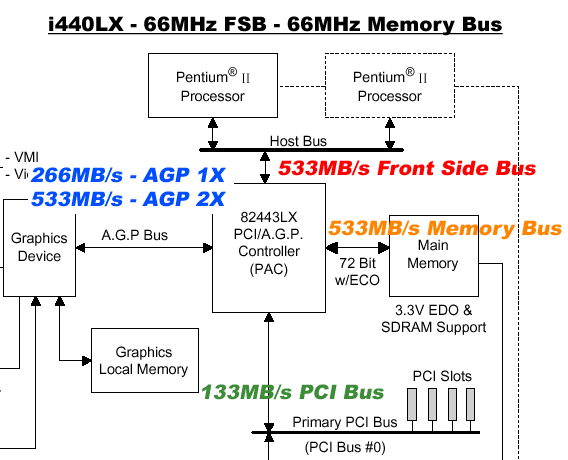Intel has always had the “habit” of planning ahead. While their decisions may sometimes seem to be made without any thought whatsoever, it is often the case that they make those decisions for a reason, but those benefits may not be seen until later down the road.
Following that theory, at the time the Celeron was released, there wasn’t a huge performance difference between a 66MHz FSB and a 100MHz FSB. This made many users think that it was unwise of Intel to move to the 100MHz FSB on the BX platform because it didn’t really offer any major performance increases.
Before we get into actual performance numbers, let’s take a look at the bandwidth requirements of your basic system.

Here we have an old 440LX setup with a 66MHz FSB and a 66MHz memory bus which are the official operating conditions for the Celeron. Because both the FSB and the memory bus are 64-bits wide and run at 66MHz, they both provide 533MB/s of bandwidth to/from the North Bridge. Now if your CPU just communicated to your memory all the time and didn't have to compete with any other devices in the system for that 533MB/s of bandwidth all would be good.
Unfortunately, once you factor in the 533MB/s of bandwidth an AGP 2X graphics card is capable of sustaining and the 133MB/s of the PCI bus, all of the sudden that 533MB/s throughput to the memory doesn't seem to be all that much. But as long as the graphics subsystem and the PCI bus aren't taking up too much memory bandwidth, you should be fine.










0 Comments
View All Comments